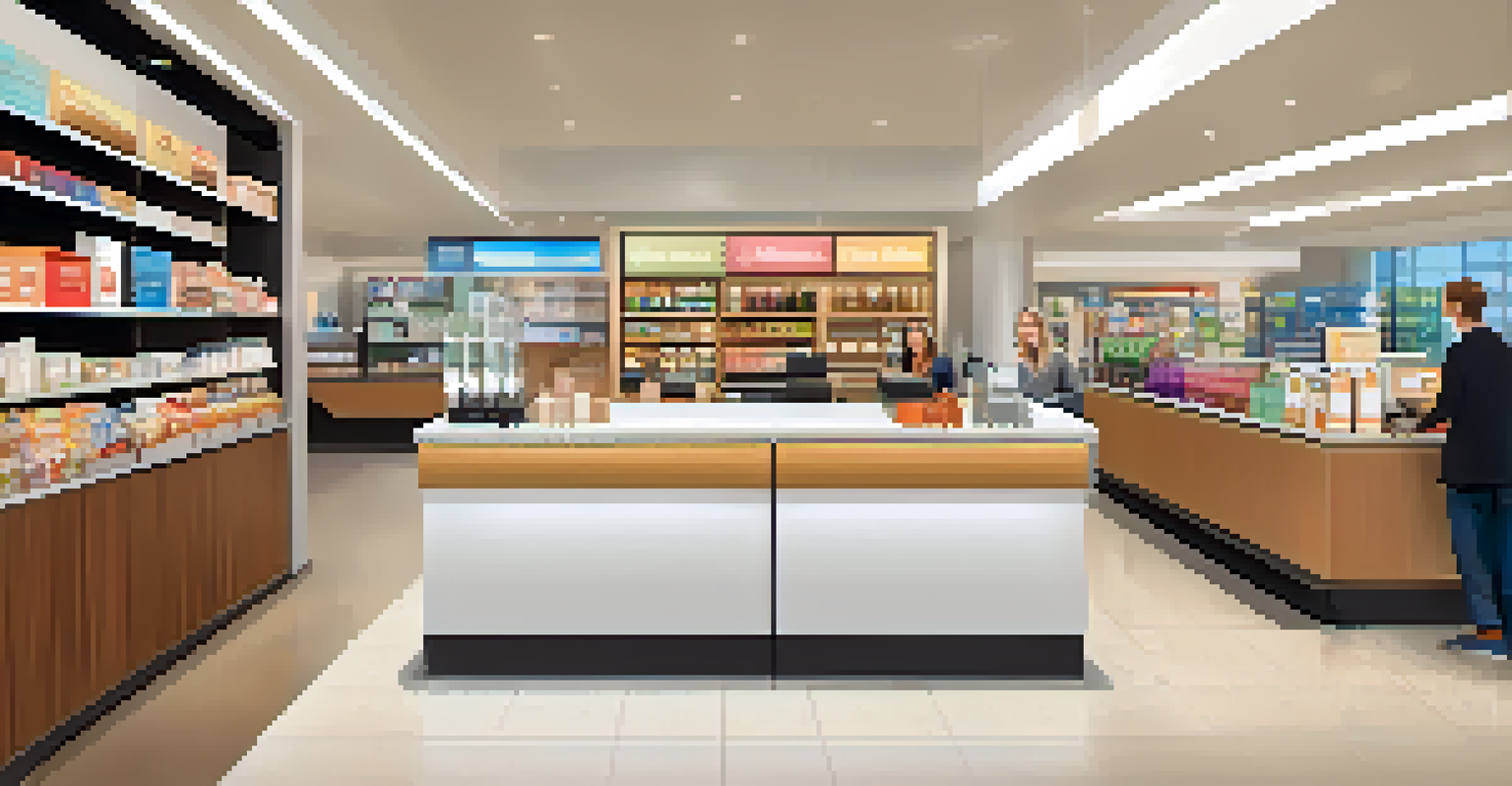Understanding the Sales Funnel: Key Stages Explained

What is a Sales Funnel and Why It Matters
The sales funnel is a visual representation of the customer journey from awareness to purchase. Think of it like a journey through a maze, where potential customers navigate different paths before reaching the exit—making a purchase. Understanding this funnel is crucial for businesses as it helps them identify where they can improve their marketing and sales strategies.
The goal of a successful salesperson is to become a trusted advisor to their clients.
In essence, the sales funnel breaks down the complex process of buying into manageable stages. This allows marketers and sales teams to tailor their approaches, ensuring that they effectively engage potential customers at every step. By recognizing the significance of each stage, businesses can optimize their efforts and increase conversion rates.
Moreover, the sales funnel is not just a linear path; it’s dynamic and can evolve based on customer behavior. This means that businesses need to be adaptable and responsive to changes in how customers interact with their brand, making the understanding of the sales funnel even more critical.
Stage 1: Awareness - Capturing Attention
The first stage of the sales funnel is awareness, where potential customers become aware of your brand or product. This is often achieved through various marketing strategies such as social media, content marketing, or paid ads. Imagine attending a party and being introduced to someone new; this is the moment when a potential customer first hears about your offerings.

During this stage, it’s essential to create compelling content that speaks to your target audience's needs and interests. Whether it's a blog post that addresses a common pain point or an eye-catching social media ad, your goal is to grab their attention. Think of it as fishing; you need the right bait to lure in your catch.
Sales Funnel: A Customer Journey
The sales funnel visually represents the stages customers go through, from awareness to purchase, helping businesses refine their marketing strategies.
Effective awareness strategies set the foundation for the next stages of the funnel. By making a memorable impression early on, you increase the chances of potential customers engaging further with your brand, ultimately leading them down the funnel.
Stage 2: Interest - Building Curiosity
Once awareness is established, the next step is to generate interest. This is where potential customers start to explore your product or service in more detail. Consider this stage like browsing a store; customers might see something they like, but they need encouragement to delve deeper.
People don’t buy what you do; they buy why you do it.
At this point, you should provide valuable information that piques their curiosity. This could be in the form of informative articles, engaging videos, or interactive content that showcases your offerings. The goal is to create a connection and establish your brand as a credible source of information.
Encouraging interest also involves effectively addressing any questions or concerns potential customers may have. By being proactive and informative, you help potential customers feel more confident about considering your product, setting the stage for the next step in their journey.
Stage 3: Consideration - Weighing Options
In the consideration stage, potential customers are actively evaluating their options, including your product. This is akin to comparing different restaurants before deciding where to dine; they weigh the pros and cons of each choice. Your task here is to provide compelling reasons why your offering stands out from the competition.
During this stage, sharing customer testimonials, case studies, or detailed product comparisons can be highly effective. This not only builds trust but also helps potential customers visualize how your product can solve their problems. It’s about painting a clear picture of the benefits they stand to gain.
Stages Build Towards Purchase
Each stage of the sales funnel, from awareness to advocacy, plays a crucial role in guiding potential customers towards making a purchase.
Moreover, offering incentives like free trials or discounts can tip the scales in your favor. By making it easy for customers to try before they buy, you eliminate some of the hesitation they might feel, moving them closer to the decision-making stage.
Stage 4: Intent - Indicating Readiness to Purchase
When potential customers reach the intent stage, they are showing clear signs of readiness to purchase. It’s like seeing someone at the checkout counter with items in their cart—indicators of a strong intent to buy. This is a crucial moment where you can capitalize on their interest and guide them towards completing the purchase.
At this stage, providing detailed product information, pricing options, and clear calls-to-action can be incredibly effective. It’s about removing any last-minute barriers that might prevent them from moving forward. Think of it as offering a helping hand to someone ready to take the leap.
Additionally, addressing any objections or concerns they may have is essential. Open communication and reassurance can make all the difference, ensuring that potential customers feel confident and excited about their decision to purchase.
Stage 5: Evaluation - Overcoming Final Hurdles
The evaluation stage is where potential customers finalize their decision before making a purchase. Imagine standing at the edge of a diving board; they’re poised to leap but may still have doubts. This is the moment to reinforce their choice and alleviate any lingering concerns.
Providing comparisons, guarantees, or even personal outreach can play a significant role here. By addressing any hesitations head-on, you help potential customers feel more secure in their decision. It’s about building that last layer of trust that can turn a potential sale into a definite one.
Post-Purchase Engagement Matters
Fostering loyalty and advocacy after the purchase is essential for long-term customer relationships and encouraging repeat business.
Additionally, offering easy-to-understand return policies or customer support options can further ease their minds. Making the purchasing process feel risk-free can encourage them to take the plunge and finalize their decision.
Stage 6: Purchase - The Moment of Truth
The purchase stage is the moment of truth, where potential customers become actual customers. It’s like the exhilarating feeling of crossing the finish line after a long race. This is what everything in the sales funnel has been leading up to, and it’s crucial to make this experience as smooth as possible.
Ensure that your checkout process is user-friendly and secure. Any hiccups at this stage can lead to cart abandonment, which is the last thing you want after all the effort put into guiding them through the funnel. Think of it as rolling out the red carpet for your new customer.

Once the purchase is made, don’t forget to celebrate this milestone with a thank-you email or confirmation. This not only reinforces their decision but also sets the stage for building a long-term relationship with your new customer.
Stage 7: Post-Purchase - Fostering Loyalty
After the purchase, the journey doesn't end; it transitions into the post-purchase stage. This is where you focus on fostering customer loyalty and encouraging repeat business. Think of it as nurturing a plant; with the right care, it can grow and flourish over time.
Engaging customers through follow-up emails, satisfaction surveys, or loyalty programs can keep them connected to your brand. This encourages repeat purchases and can even turn one-time customers into brand advocates. The goal is to ensure they feel valued and appreciated after their purchase.
Additionally, providing excellent customer service can significantly impact their experience. When customers know they can rely on you for support, they are more likely to return and recommend your brand to others, further enhancing your reputation.
Stage 8: Advocacy - Turning Customers into Promoters
The final stage of the sales funnel is advocacy, where satisfied customers become your brand's promoters. This is like having a fan club; enthusiastic customers share their positive experiences with others, driving new business. At this point, your goal is to harness their loyalty and turn it into powerful word-of-mouth marketing.
Encouraging customers to leave reviews, share testimonials, or refer friends can amplify your reach. Think of it as planting seeds; happy customers can help your brand grow organically through their networks. Engaging with them on social media or featuring them in case studies can also strengthen this relationship.
Ultimately, the advocacy stage is about creating a community around your brand. When customers feel a sense of belonging and connection, they are more likely to advocate for your brand, leading to a continuous cycle of awareness, interest, and purchase for new potential customers.